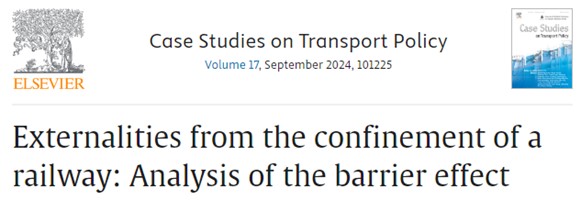Alejandro Tirachini, Francisca Inostroza, Rodrigo Mora, Daniela Cuevas, Diego Fuchser
Abstract
In this paper, we present a mixed qualitative-quantitative approach to analyse the multiple dimensions of the barrier effect caused by the removal of all at-level pedestrian crossings on a railway in a residential area of Santiago, Chile, as part of a new suburban rail service. A set of interviews with a wide range of stakeholders is followed by a quantitative analysis of time delays and extra discomfort for pedestrians, as we measure both the horizontal and vertical detours on walking distance and time, due to having to cross on pedestrian overpasses and underpasses. We find that (i) the new suburban rail service is a source of social inclusion on a metropolitan scale (accessibility gains) and of social exclusion on a more local scale, due to a barrier effect (ii) the confinement of the railway produces strong negative impacts on pedestrians that need to cross the railway, by increasing walking times and by worsening their perception of security and comfort (iii) underpasses and overpasses increase between twofold and fourfold the time needed to cross the railway on average, relative to the case of at-level crossings, (iv) taking into account the increased physical burden and insecurity perceived on overpasses and underpasses, weighted walking times increase up to ten times relative to at-level crossing, and (v) women, elderly people and pedestrians with heavy luggage are more affected by the increased walking time. Traditional methods employed to analyse large-scale transport projects should assess the negative implications of the barrier effect on local communities, as well as the relief measures designed to reduce local segregation, especially in vulnerable communities. The results of this study are useful to quantify the social value of such relief measures, particularly in highly unequal urban settings.
